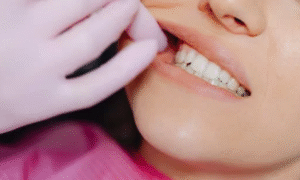If you have minor gaps between your teeth—sometimes called diastemas—you might be searching for a quick, effective, and natural-looking way to close those spaces and achieve a confident, even smile. Composite bonding is a leading solution dentists recommend for fixing minor gaps, and for good reason. In this post, we’ll explore the specific advantages of composite bonding, how it compares to alternatives, and why it’s often the preferred choice for patients who want to perfect their smile with minimal fuss.
Understanding Composite Bonding for Gaps
Composite bonding involves the skilled application of a tooth-colored resin (composite) to close gaps and improve the aesthetic of the teeth. This resin material is sculpted and hardened directly on the tooth, blending seamlessly with your natural enamel. The process is typically completed chairside within a single dental appointment and requires little to no alteration of your existing teeth.
But what truly sets composite bonding apart, especially for closing minor gaps? Let’s delve into the benefits.
Benefits of Composite Bonding for Fixing Minor Gaps
1. Quick and Convenient Treatment

One of the top advantages of composite bonding is speed. Most minor gap closures can be completed in just one dental visit. The procedure usually takes between 30-60 minutes per tooth, depending on the size and number of gaps. There’s no need for multiple appointments, wait times for lab work, or elaborate pre-treatment planning. This makes composite bonding ideal for busy adults, students, or anyone looking for a rapid transformation.
Key Point: You can walk in with a gap, and walk out the same day with a more uniform smile.
2. Minimally Invasive and Painless
Unlike some cosmetic treatments that require removing enamel or reshaping teeth, composite bonding is extremely gentle. For closing small gaps, your dentist will often not need to drill or use injections. Most patients find the entire process comfortable, and anaesthesia is rarely necessary.
This non-invasive nature also means you preserve your natural tooth structure. There’s no irreversible alteration, unlike treatments such as crowns or porcelain veneers, which require more aggressive preparation.
3. Natural-Looking and Aesthetic Results
The composite resin used in bonding comes in a wide range of shades, allowing your dentist to color-match the material to your existing teeth. When skillfully applied and shaped, composite bonding for gaps can appear virtually undetectable. Dentists can contour the material not only to fill in the space, but also to maintain the natural curves and bite alignment of your teeth.
The result: A seamless, balanced smile—without obvious signs of dental work.
4. Immediate Confidence Boost
Gaps in teeth can sometimes be a source of self-consciousness. By choosing composite bonding, you benefit from instant results—visible as soon as the procedure is finished. This is especially valuable for those preparing for important events like weddings, graduations, or job interviews, where your appearance matters and there’s little time to wait for lengthy treatments.
5. Affordable Compared to Alternatives

For minor gaps, composite bonding is generally one of the most cost-effective cosmetic dental procedures. It is considerably less expensive than other solutions, such as porcelain veneers or orthodontic treatments (like clear aligners). With bonding, you pay only for the material and the dentist’s time—no expensive lab fees or long treatment timelines.
For patients who are cost-conscious, this makes fixing gaps within reach, with less financial stress.
6. Versatile and Reversible
Composite bonding’s practicality goes beyond closing gaps. The same procedure can also address minor chips, cracks, shape irregularities, and even some discoloration, making it a multi-purpose solution for cosmetic tweaks.
Importantly, because bonding rarely removes enamel, the treatment is often reversible. If you ever wish to change the bonded area or explore other cosmetic options in the future, your dentist can adjust or remove the composite material with minimal risk to the natural tooth underneath.
7. Strengthens and Protects Teeth
Although composite bonding is primarily a cosmetic treatment, it can strengthen weak areas between teeth. By filling a gap, the resin adds a layer of protection against food traps and plaque retention, lowering the risk of decay or gum irritation in those spaces. In some cases, closing a gap can also help redistribute bite pressure, improving function alongside aesthetics.
8. Supports Proper Oral Hygiene
Large or irregular gaps can make effective brushing and flossing more difficult, sometimes leading to food lodging between teeth or mild gum discomfort. By evening out these surfaces, composite bonding can contribute to easier at-home hygiene, reducing the risks of inflammation and inter-dental cavities.
The Composite Bonding Procedure for Gaps: Step by Step

Knowing what to expect can put many patients at ease:
1. Consultation: Your dentist examines your gaps and discusses the look you’re hoping for.
2. Shade Selection: A color guide is used to choose a resin shade that perfectly matches your natural teeth.
3. Minimal Preparation: The tooth surface is cleaned and may be lightly roughened for better adhesion.
4. Bonding and Sculpting: The composite resin is placed and shaped to blend across the gap.
5. Curing: A special blue light hardens the resin within seconds.
6. Polishing and Finishing: The bonded area is finely shaped and polished until it matches the shine of your adjacent teeth.
7. Result: Your gap is closed, and the new surface is smooth, functional, and beautiful.
Most patients resume normal activities immediately—there’s no downtime needed.
Durability and Limitations
Composite bonding for minor gaps typically lasts 3–7 years with good care. While the bonding material is strong, it’s not as resistant to stains or wear as porcelain or natural enamel. Avoiding biting hard objects, practicing good hygiene, and regular dental checkups can maximize longevity. If needed, touch-ups or replacements are quick and easy for your dentist to perform.
This treatment is optimum for minor gaps—larger spaces or structural issues might require alternatives, such as orthodontics or veneers. Your dentist will advise on suitability during your assessment.
Conclusion: Is Composite Bonding Right for Your Minor Gaps?
Composite bonding stands out as a fast, comfortable, conservative, and cost-effective way to close minor gaps and rejuvenate your smile. It’s especially ideal for those seeking immediate results and a natural look without the commitment or expense of more invasive procedures.
If you’re bothered by small spaces between your teeth, consider an appointment with our dental clinic. We’ll discuss your goals and help you achieve an even, confident smile—quickly and comfortably—with composite bonding.
Ready to close the gap? Contact us today to learn how composite bonding can transform your smile in just one visit!


